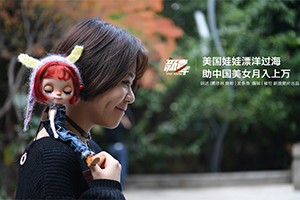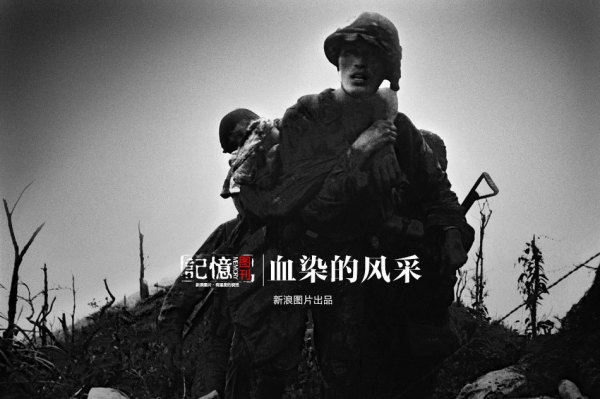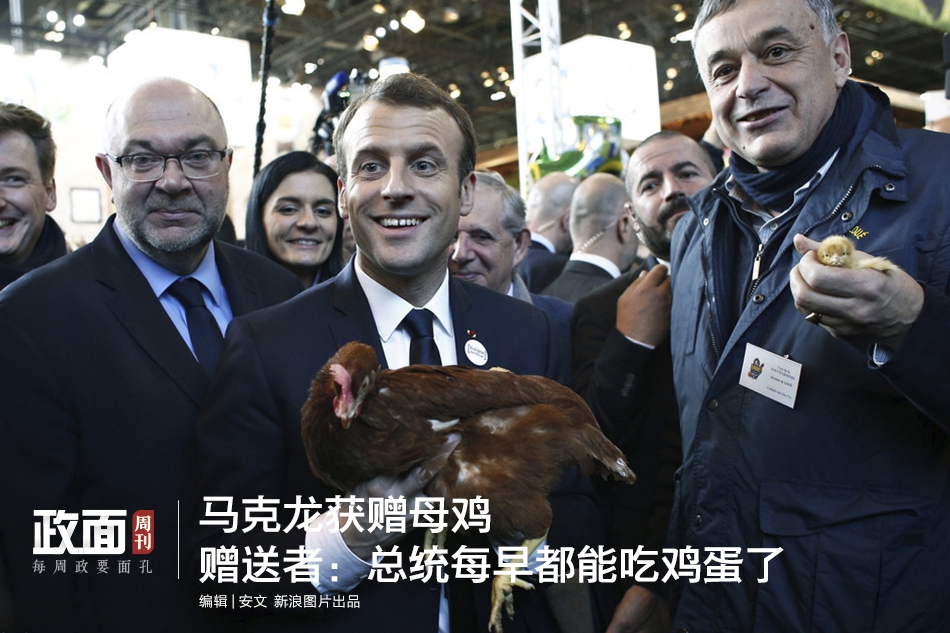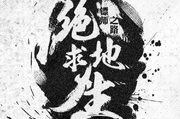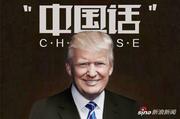How IKEA's Founder Exported a Certain Image of Sweden–from Frugality to ‘Fika’
宜家创始人如何输出瑞典的某种形象——从节俭到fika
Cecilia Cassinger 塞西莉娅·卡辛格
weden is trending right now, with cultural concepts such as “lagom” (just enough) and“fika” (coffee break) selling everything from books to fashion. The nation is often seen as a social democratic model country, where people are egalitarian,wealthy and happy. As Ingvar Kamprad, the founder of the Swedish multinational furniture retailer IKEA,recently passed away, it is interesting to reflect on how he and IKEA may have contributed to exporting this image.
Take a look in any IKEA shop, and you'll notice you are surrounded with Swedishness. The logo is in the colours of the Swedish flag. The pieces of furniture all have Swedish names and the canteen boasts a number of Swedish delicacies. But the company also sells more subtle narratives about Sweden.
In fact, for almost three decades IKEA has strategically commodified Swedish cultural concepts, symbols and political ideas and exported them across the world. “To visit IKEA is to visit Sweden,” as a former director general of the Swedish Institute once stated.
Kamprad was a contradictory character – frugal,friendly and modest but also an alcoholic with past links to fascism. While we can't know exactly what his legacy will be, the myth surrounding him has secured him immortal fame in Sweden, where he started his business in the mid-20th century.
His early life is portrayed by IKEA as years of hardship circumvented by the innovation of a thrifty boy. He is forever engraved in the company's name, which is composed by Kamprad's initials (“IK”) and the first letters of the remote farm (Elmtaryd) respectively small village where he grew up (Agunnaryd).
Many Swedes are proud of IKEA, which currently has 300 stores in 38 countries. Like a number of other companies,IKEA uses Swedish culture as part of its marketing stra-
tegy. The company tells stories about Sweden that Swedes as well as non-Swedes recognise and identify with.
The story of Kamprad is even told on the official website of Sweden to promote the image of the country internationally. IKEA here becomes a symbol of what political scientist Benedict Anderson called an “imagined community”, referring to nations as collective social constructions situated in particular histories and geographies.
The story of Kamprad as a self-made businessman fits the image of Sweden as an entrepreneurial nation in a new economy focused on innovation and small, knowledge intensive firms.
The story is quite conventional and follows the universal storytelling pattern of the “monomyth” in narrative mythology, in which a hero reluctantly sets out on an adventure and is forced to go through a series of trials before he can return home with the sacred objects. A central theme in the story of Kamprad, as IKEA tells it,is that of the heroic entrepreneur who overcomes obstacles posed by the market through hard work.
The theme of hard work underpins a crucial aspect of IKEA's business model: the DIY concept. Every time a consumer enters into an IKEA shop, she or he enacts the hero's journey by way of collecting, carrying, transporting and assembling furniture and products. By putting the consumer to work in the shop,IKEA also underscores an important characteristic of the highly secularised albeit Protestant Swedish culture, namely that one needs to deserve achievements: success relies on frugality. In assembling the furniture by hand,the consumer partakes in a kind of ritual celebration of hard work.
IKEA's take on DIY and selling affordable products to the masses are also linked to yet another well-known concept in Swedish culture, “Folkhemmet”, which literally means the “home of the people”. This was a social democratic political vision of the good society –in which everyone is treated as an equal and has access to general welfare.
瑞典眼下很时髦,lagom(不多不少刚刚好)和fika(咖啡时间)这些文化概念使从书籍到时尚等一切瑞典货畅销。这个国度常常被看作社会民主的样板国,那里的人们平等、富裕、幸福。瑞典跨国家具零售公司宜家的创始人英瓦尔·坎普拉德最近去世,此刻思考他和宜家如何促进这种形象的输出是一件有意思的事情。
随便去哪个宜家门店看上一眼,你都会注意到周遭的瑞典风格。宜家的标志是瑞典国旗的颜色。所有家具都有瑞典名字,餐厅则提供各种瑞典美食。但是,这家公司也销售更微妙的瑞典故事。
事实上,近30年来,宜家一直在战略性地把瑞典的文化概念、标志象征和政治理念商品化并出口到世界各地。正如瑞典对外交流委员会一位前主任曾经说的:“去宜家就是去瑞典。”
坎普拉德是一个矛盾的人物——节俭,友好,谦逊,但也是个酒鬼,而且曾经和法西斯有染。我们虽然不能确定他到底会留下什么遗产,围绕他的神话却使他在瑞典声名不朽:他20世纪中期开始在这里创业。
按照宜家的描述,他的早年充满艰辛,但这个节俭的少年凭着发明创新克服了这些困难。他永远铭刻在公司名称里:宜家由他的姓名首字母IK以及他长大的偏远农场和小村的首字母(EA)组成。
很多瑞典人为宜家感到自豪,这家公司目前在38个国家有300个商店。像其他很多公司一样,宜家把瑞典文化用作营销战略之一。宜家讲述的瑞典故事无论是瑞典人还是外国人都能认可并产生共鸣。
坎普拉德的故事甚至放在瑞典官网上用来向全球宣传瑞典的形象。这样,宜家就成为政治学家贝尼迪克特·安德森所说的一个“想象的共同体”的象征,这里的“想象的共同体”指的是把国家作为处于特定历史和地理位置的集体社会概念。
坎普拉德白手起家的故事符合瑞典的形象:一个重视创新和小型知识密集型公司的富于创业精神的国度。
他的故事相当传统,遵循叙事体神话中“单一神话”的普遍叙述模式,即英雄不情愿地踏上冒险之旅,被迫经历一系列考验,然后带着圣物返回故乡。按照宜家的描述,坎普拉德人生故事的一个核心主题是,英勇的创业家通过奋斗克服市场构成的各种障碍。
奋斗这个主题支撑着宜家商业模式的一个关键方面:自己动手的理念。消费者每进入一家宜家商店,她或他都通过提取、搬运和组装家具及产品上演了英雄的旅程。通过让消费者自己劳动,宜家也强调了高度世俗化但新教的瑞典文化的一个重要特征,也就是你需要配得上自己的成就:成功依赖节俭。通过自己动手组装家具,消费者就在参与赞美奋斗的某种仪式。
宜家对自己动手和向大众销售便宜产品的观点也与瑞典文化中另一个著名概念Folkhemmet有关:这个词的字面意思是“人们的家”。这是社会民主派对良好社会的政治愿景:在这个社会里,人人都被平等相待,都可以享受普遍的福利。(赵菲菲译自澳大利亚“对话”网站2月1日文章)

更多猛料!欢迎扫描左方二维码关注新浪新闻官方微信(xinlang-xinwen)
推荐新闻
- 【 新闻 】 中国研发“超级高铁” 理论时速1000公...
- 【 军事 】 中国核航母或能载60架歼20 追赶福特级
- 【 财经 】 碧桂园前CFO回忆录写了哪些内容?
- 【 体育 】 26+11!赛季最硬气1仗 火箭有他就打不...
- 【 娱乐 】 日常打Call!范冰冰喊话范丞丞:加油
- 【 科技 】 摩拜ofo取消月卡:共享单车收割用户
- 【 教育 】 艺考生打车丢包 戏精司机扮好心人敲竹...
违法和不良信息举报电话:010-62675637
举报邮箱:jubao@vip.sina.com
Copyright © 1996-2018 SINA Corporation
All Rights Reserved 新浪公司 版权所有




